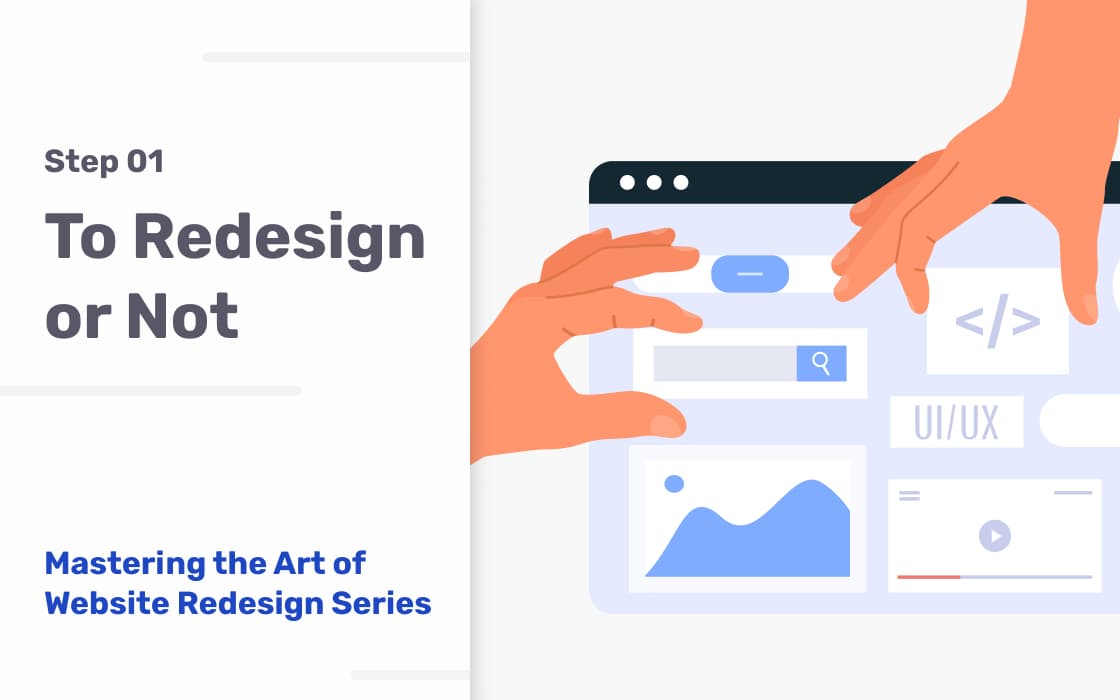In the ever-evolving world of the internet, the question isn’t just about having a website but whether it’s time to give that site a facelift. But here’s a twist: a redesign doesn’t always mean starting from zero. Sometimes, it’s about tweaking what you already have to turn good into great. In this series, we’ll explore the reasons for a website redesign and when it might be wiser to hold back.
I’m Shaun, by the way. I’ve been around the web design block for 25 years, but don’t let that fool you into thinking I’m here to preach from a digital pulpit. Consider me more like a friend who’s navigated these waters and is here to point out the hidden rocks and currents. So, with a touch of humor and plenty of real talk, let’s get down to the nitty-gritty of website redesigns.
What is a Website Redesign?
Think of a website redesign not just as a facelift but more like renovating your digital home. Sometimes, it’s about a fresh coat of paint – updating the layout or graphics. Other times, you’re knocking down walls to improve flow – like reorganizing your site’s navigation or content. And occasionally, it’s about building new extensions – adding functionalities or updating your technology stack.
But why embark on this journey? Well, the reasons are as varied as the websites themselves. Maybe your site needs to catch up with your business’s growth; it’s not as nimble on mobile as it should be, or it could lag in performance compared to your competitors.
However, here’s the clincher: a redesign isn’t always about starting from zero. It’s about making strategic updates to ensure your site continues to serve your business and your audience effectively. With 25 years in the game, I’ve learned that the secret sauce often lies in what you choose to keep as much as in what you decide to change.
So, how do you decide if a redesign is right for you? Let’s dive into the reasons to consider a redesign – and, just as importantly, why it might be better to hold off.
Reasons to Initiate a Redesign
- Outdated Design: If the website looks dated, it can negatively impact the user’s perception of the brand.
- Poor User Experience: Navigation confusion / clutter, slow load times, or non-responsive design for mobile devices can drive users away.
- Inadequate Functionality: As businesses evolve, their websites might need new features or functionalities that the current platform or design cannot support efficiently.
- Rebranding: A significant brand image, mission, or value change often necessitates a website redesign to reflect the new brand identity.
- SEO and Performance Issues: If the site is not optimized for search engines or has technical issues that affect its performance, a redesign can address these problems.
- Security Concerns: Older websites might be more vulnerable to security breaches, and a redesign can incorporate newer, more secure technologies.
- Market Changes: Adapting to new market trends, customer preferences, or competitor advancements can require significant updates to a website.
Reasons Not to Redesign
- Brand Consistency: A complete overhaul might be unnecessary if the current design strongly resonates with the audience and effectively represents the brand.
- Cost and Resource Constraints: Redesigns can be costly and time-consuming; if the budget and resources are limited, it may not be feasible.
- Recent Updates: If the website was recently updated or redesigned, it might be more prudent to make incremental improvements rather than a full redesign.
- SEO Stability: A complete redesign can temporarily impact search rankings; if current SEO performance is strong, it may be risky to make drastic changes.
- User Familiarity: Regular visitors are accustomed to the current layout and functionality; a redesign can be disorienting and potentially off-putting for loyal users.
- Functionality Meets Needs: If the website’s current functionality aligns well with business goals and user needs, a redesign might not add significant value.
- Analytics Don’t Support Change: If data and user feedback indicate satisfaction with the current design and functionality, a redesign may not be justified.
Scenarios Leading to a Website Redesign
The End-of-Life Dilemma
Picture this: you’re cruising along on Drupal 7, and then bam! You hit the end-of-life wall. It’s like being told your trusty old car is so outdated that even mechanics don’t want to touch it. This isn’t just about sprucing things up; it’s a necessity. I’ve seen clients in this boat face a fork in the road: a leap to Drupal 10, which isn’t just a hop, skip, and a jump but more like a giant leap or pivot to something entirely different, like WordPress. It’s not just a redesign; it’s rethinking how your website lives in the digital world.
New Sheriff in Town
Change in leadership can be like a gust of fresh air… or a hurricane, depending on who you ask. When the baton passes from one generation to another, say from a Boomer to a Gen Xer, it’s not uncommon for the new leader to want to shake things up. I’ve been part of projects where this generational shift meant reevaluating the website from the ground up, aligning it with new visions and energies. It’s like redecorating the house after inheriting it from your grandparents – respecting the legacy while making it your own.
The Competition Got a Glow-Up
Ever noticed your competitor suddenly looking all shiny and new online, setting the bar way higher? I’ve seen plenty of redesign projects kick-off because a rival stepped up their game. It’s like keeping up with the Joneses but in the digital neighborhood. When your competitor’s website becomes the talk of the town, it’s natural to feel the heat to up the ante. This isn’t just vanity; it’s about meeting the evolving expectations of your audience and staying relevant in the market.
Each of these scenarios highlights a different catalyst for a website redesign. They’re real-world, practical situations where sticking to the status quo might mean getting left behind. So, let’s talk about how to navigate these waters.
The Case for a Discovery Process
So, we’ve journeyed through the twists and turns of deciding whether a website redesign is right for you. But before you charge ahead with all guns blazing, let’s pause for crucial advice: embark on a discovery process first.
Think of it as your digital treasure map. Diving headfirst into a redesign project without this map is like setting sail without a compass. Sure, you might find land, but will it be the paradise you’re looking for, or will you end up on the shores of ‘We-Didn’t-Think-This-Through’ Island?
A discovery process puts everything under the microscope – your needs, goals, audience, and, yes, even those sneaky little details that often get overlooked. It’s about turning over every rock and understanding what lies beneath it before you start building on top of it.
Why is this so important? Because, in my 25 years of navigating these waters, I’ve seen too many projects get caught in the undercurrent of “Oh, we didn’t consider that.” This oversight often leads to a bloated budget, extended timelines, and frayed nerves. Trust me, realizing halfway through that you need more content, a different functionality, or that a new idea (as brilliant as it may be) will add more cost and time can dampen the creative process.
So, take a step back and invest time in a thorough discovery. It sets the stage for a smoother voyage and helps ensure that when you do embark on your redesign journey, you’re doing so with a clear vision, a solid plan, and a realistic understanding of what lies ahead.
Happy navigating!
Mastering the Art of Website Redesign Series
Scoping Your Redesign
Setting the scope of a redesign isn’t about throwing everything at the wall to see what sticks. It’s about strategically deciding how deep the transformation should go.

